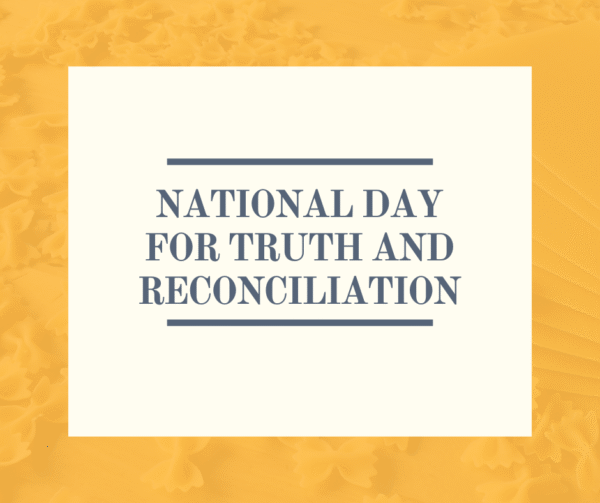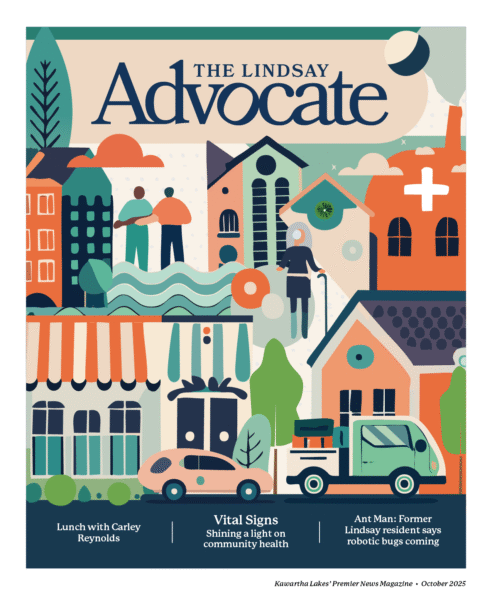Reconciliation is more than a day

You know how every year around the holidays, you always hear someone say that every day should be more like Christmas, and that we should keep the Christmas spirit going all year long? In a similar vein, with National Day for Truth and Reconciliation, let’s apply the same thinking.
The change in awareness over the past decade has been impressive. The report of the Truth and Reconciliation Commission opened the eyes of non-Indigenous Canadians to the realities of the harm caused by the residential school system. Those graduating from high school now have encountered this aspect of our country’s past and its lingering legacy since their early years. And those of us who are older, who shake our heads and say, “Why did we never learn about this in school?” have never had more opportunities to educate ourselves. Here are just a few suggestions.
Learn about local treaties
Treaty 20, also known as the Rice Lake Purchase, dates to 1818. The Williams Treaties of 1923 were hastily put together to provide legal cover for the settlement that had long been underway, with newcomers simply clearing land and setting up farms and communities in contravention of the Royal Proclamation of 1763. In both cases, the First Nations perspective on what they were agreeing to is very different from the treatment they received.
Read the 94 TRC’s Calls to Action
The Truth and Reconciliation Commission spent years listening to thousands of people all over Canada. It distilled its recommendations into these calls, which touch on education, the legal system, child welfare, the responsibilities of churches, culture, language, sports and more. Estimates vary depending on how you define results, but a common figure is that perhaps 15 of the calls have been acted on.
Visit the Witness Blanket
Yes, it’s just outside Kawartha Lakes, but the chance to see this installation at Trinity United Church in Cannington is literally a once-in-a-lifetime thing for most of us, unless you happen to be in Winnipeg to see the original at the Canadian Museum of Human Rights. The Witness Blanket is actually a wood structure that incorporates artifacts from residential schools and survivors, offering a way to connect with this part of our history in order to better understand our present. The free exhibit is open from noon to 8:00 p.m., Tuesday through Sunday, until Oct. 18.
It’s great that so many people put on an orange shirt, attended special events and watched the national broadcast of commemorations from Parliament Hill. Now let’s ensure we keep the spirit of reconciliation alive every day of the year.





As part of our efforts to participate fully in truth and reconciliation, it is important to recognize how progressive was the Royal Proclamation of 1763 that gave land title of the Americas to the Indigenous peoples. Without the visionary respect and high regard of King George III for the Indigenous peoples of the Americas, there would have been no treaties and no reparations and no latter-day accusations of genocide. The conquered peoples would have been assimilated, if not killed entirely, and history would have recorded no injustice.
That time was so different from today that it is almost impossible to imagine what it was like. The fur trade was still prospering and Indigenous peoples enjoyed profitable relationships with the French, English and others from foreign lands. So, some fought with the French and some fought with the English to defend their families and community’s interests in commerce. It was hard, as is so often the way still today, to distinguish between friend and foe.
“The Seven Years’ War (1756–63) was the first global war, fought in Europe, India, America, and at sea. In North America, imperial rivals Britain and France struggled for supremacy. In the United States, the conflict is known as the French and Indian War. Early in the war, the French (aided by Canadian militia and Indigenous allies) defeated several British attacks and captured a number of British forts. In 1758, the tide turned when the British captured Louisbourg, followed by Quebec City in 1759 and Montreal in 1760. With the Treaty of Paris of 1763, France formally ceded Canada to the British. The Seven Years’ War therefore laid the bicultural foundations of modern Canada.” (Canadian Encyclopedia)
“On October 7, 1763, King George roman numeral 3III issued a Royal Proclamation establishing a new administrative structure for the recently acquired territories in North America. He also established new rules and protocols for future relations with First Nations people.
The proclamation has 2 parts of significance:
1) defining the land west of the established colonies as “Indian Territories”, where First Nations people “should not be molested or disturbed” by settlers and where the Indian Department would be the primary liaison between the Crown and First Nations people, and
2) prohibiting colonial governors from making any grants or taking any land cessions from First Nations people by establishing a set of protocols and procedures for the purchasing of First Nations land.” (Government of Canada)
Great Britain formally has no Indigenous peoples, although the Neanderthals are believed to have perhaps been the first peoples to populate the region, so often were its people invaded and assimilated. There was no welfare and there were no reparations for the conquered. Their DNA often survived only by its widowed women sleeping with the enemy and raising their children as slaves. The Doctrine of Discovery was the usual way of treating the conquered.
Perhaps that explains why so many comments today on social media bemoan the call to all of us to recognize the injustices suffered by Canada’s Indigenous peoples, including and especially the abuses suffered in the Indian Residential School System. They point out, correctly, that the abuses detailed in the Truth & Reconciliation report were suffered in all boarding schools and often in family homes by all children of the time. The dominant religious belief at that time was that children were born with original sin and needed it beaten out of them.
Many don’t adequately grasp the profound leap forward in justice the treaties settlements signify. While we still, as a species, have far to go in achieving global justice, the progressive recognition of the rights of the other to land, language, and culture, despite what we got wrong with the T&R investigations, bodes well for a better future.
To truly reconcile, we must all shares our stories, even when the facts they cite contradict the others’ stories, and learn to tolerate even that difference, so long as there is justice in the basics like food, shelter, safety. There is nowhere to escape from Planet Earth (not until Musk gets his way, in any event), so the sooner we learn to recognize what is vital to life and leave the mystery of what is to a variety of fictional interpretations, the better. IMHO
All I feel is gratitude. Gratitude to our ancestors who were the bravest human beings on earth. They got on boats and sailed thousands of miles to unknown lands and built the most incredible civilizations the world has ever seen. Their bravery was immeasurable. They are the ones who should be celebrated every day of our lifetime.